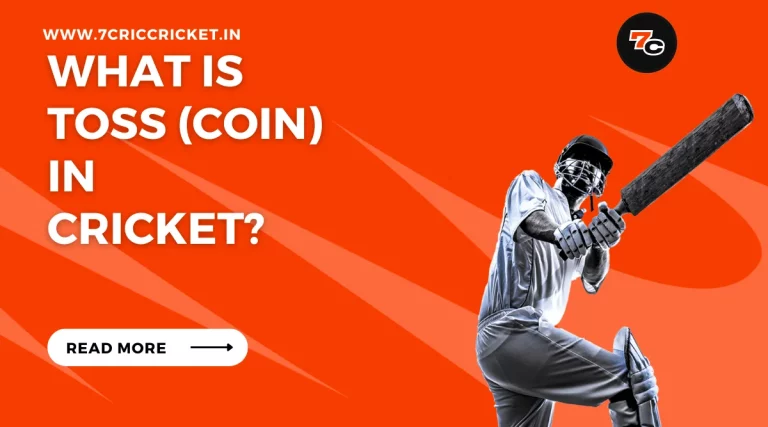What Is Declaration in Cricket?
In the world of cricket, a declaration holds great significance, strategically shaping the course of a match.
A declaration occurs when the batting team’s captain voluntarily ends their team’s innings, allowing the opposing team a chance to bat.
Up to 75% Reload Bonus on Aviator
Up to 75% Reload Bonus on Aviator
- Easy Sign-Up and Deposits
- Win 1000x Bet Amount!
- Available in four different Indian languages
This calculated decision can swing the momentum of the game, aiming to maximize scoring opportunities or create challenges for the opposition.
Understanding the purpose, factors, and impact of declarations is crucial for players, coaches, and fans alike, as it adds another layer of complexity to the captivating sport of cricket.
Summary & Key Takeaways
ShowDefinition of Declaration
A declaration in cricket refers to the act of a team’s captain voluntarily ending their team’s batting innings.
This decision is made when the captain believes that the team has scored enough runs and it is advantageous to declare the innings closed.
The advantages of declaration are manifold. Firstly, it allows the team to save time and gives them the opportunity to bowl at the opposing team, thereby increasing their chances of winning the match.
Secondly, it puts pressure on the opposition by setting a target that they must chase, which can lead to mistakes and wickets falling.
Thirdly, it can demoralize the opposition, especially if they were hoping to restrict the batting team’s score.
If the team has already scored a large number of runs and has a comfortable lead, the captain may choose to declare early to give their bowlers ample time to dismiss the opposition and secure a victory.
On the other hand, if the team is not in a strong position and needs more runs to feel confident, the captain may delay the declaration to allow the batsmen to score more runs and build a bigger lead.
The timing of the declaration is crucial and requires careful consideration of the match conditions and the team’s overall strategy.
Purpose of Declaration in Cricket
The purpose of a declaration in cricket is to formally conclude a team’s batting innings, providing strategic advantages such as saving time and putting pressure on the opposition.
A well-timed declaration can be a game-changer, allowing the batting team to set a challenging target for the opposition to chase or to create a situation where they have sufficient time to dismiss the opposition twice.
Successful declarations require careful consideration of various factors, including the team’s total score, the match situation, and the condition of the pitch.
The batting team must assess whether they have scored enough runs to give their bowlers a chance to take 20 wickets and win the match.
They must also consider the time left in the match and the likelihood of inclement weather or fading light that could affect the outcome.
Controversy often surrounds declaration decisions, especially when teams declare too early, leaving themselves vulnerable to a successful chase by the opposition.
This can result in exciting matches, as the chasing team attempts to achieve a target within a limited time frame.
However, it can also lead to criticism if the declaration is perceived as too conservative or too aggressive. Understanding the purpose of declaration in cricket is crucial for teams to strategize effectively.
In the subsequent section, we will delve into the factors that influence declaration decisions, shedding light on the intricacies involved in this strategic aspect of the game.
Factors Influencing Declaration Decisions
Factors influencing declaration decisions in cricket include the team’s total score, match situation, pitch condition, and time remaining in the match.
Captains play a crucial role in making declaration decisions, as they need to assess the overall performance of their team, the strength of the opposition, and the potential impact of a declaration on the match outcome.
Weather conditions also play a significant role in declaration strategies. If the forecast predicts rain or adverse weather conditions.
The batting side may declare early to give their bowlers a chance to take advantage of the conditions.
On the other hand, if the weather is expected to remain clear, the batting side may choose to accumulate a larger total before declaring, putting pressure on the opposition.
To make an informed declaration, captains need to consider the pitch condition. If the pitch is deteriorating and becoming more challenging for batting.
The batting side may opt to declare earlier to give their bowlers more time to exploit the conditions.
Conversely, if the pitch is flat and offering little assistance to the bowlers, the batting side may choose to bat longer and amass a bigger total.
Examples of Famous Declarations in Cricket History
How have famous declarations in cricket history influenced the game? Famous declarations in cricket history have had a significant impact on the game, shaping strategies and creating memorable moments.
These declarations are strategic decisions made by captains to end their team’s batting innings early, in order to give themselves a chance to win the match.
They require careful consideration and analysis of various factors, such as the match situation, pitch conditions, and the strength of the opposition.
To illustrate the impact of famous declarations, let’s take a look at some notable examples:
| Team 1 | Team 2 | Match | Year |
|---|---|---|---|
| Australia | England | The Ashes | 2005 |
| West Indies | Australia | Fifth Test, Kingston | 1968 |
| India | Pakistan | Chennai Test | 1986 |
| South Africa | Australia | Second Test, Durban | 2014 |
These examples highlight famous declaration strategies and controversial declaration decisions that have influenced the outcome of matches.
In the 2005 Ashes series, Australia’s captain Ricky Ponting declared in order to set England a target, leading to a thrilling final day and a narrow victory for England.
Similarly, in the 1968 Test between West Indies and Australia, West Indies’ captain Gary Sobers declared, setting a challenging target and ultimately winning the match.
On the other hand, there have been instances of controversial declarations, such as India’s declaration in the 1986 Chennai Test against Pakistan, which led to a draw and sparked debates about the captain’s decision-making.
These examples demonstrate the strategic nature of declarations and their ability to shape the outcome of a match.
Impact of Declaration on the Game of Cricket
Famous declarations in cricket history have had a profound impact on the game, fundamentally altering the course of matches and influencing the strategies employed by teams.
The decision to declare an innings closed can have far-reaching consequences, both in terms of the final outcome of a game and the overall tactics employed by teams.
Here are three ways in which declarations impact the game of cricket:
Scoring strategies
When a team declares, it sets a target for the opposition to chase. This target can dictate the scoring strategies adopted by the batting team.
They may choose to play aggressively to achieve the required run rate or adopt a more cautious approach to preserve wickets.
On the other hand, the fielding team may adjust their bowling tactics based on the target set, employing different strategies to take wickets or restrict the scoring rate.
Tactical game plans
Declarations force teams to devise new game plans. The chasing team must carefully assess the target and determine the best approach to achieve it.
They may alter their batting order, promote aggressive batsmen, or adopt a defensive strategy to preserve wickets.
The fielding team, on the other hand, may change their field placements, introduce new bowlers, or employ defensive or attacking tactics to counter the opposition’s approach.
Psychological impact
Declarations can have a psychological impact on both teams. A bold declaration can instill confidence and momentum in the team that sets the target, while a defensive declaration may raise doubts and uncertainty.
The chasing team may feel the pressure of the target and face increased expectations from fans and critics. This psychological aspect can influence the overall performance and dynamics of the game.
Final Thought about Declaration in Cricket
In cricket, the declaration is a tactical decision by the batting captain to end their innings. This strategy, influenced by match situation, pitch conditions, and target score, aims to give the bowling team enough time to win.
200% Spribe Aviator Welcome Bonus
200% Spribe Aviator Welcome Bonus
- Fastest Indian Rupees Withdrawals
- The Biggest Bonuses in India
- 450% Bonus up to ₹1,000,000
While some famous declarations have shifted match outcomes favorably, it’s a calculated risk. The captain must weigh victory aspirations against potential setbacks.
A well-timed declaration can change the game, but a misjudged one can lead to a loss. The declaration underscores the captain’s tactical acumen and adds thrilling dynamics to cricket.
All You Need to Know about Declaration in Cricket
How Is the Decision to Declare Made in Cricket?
The decision to declare in cricket is made through a careful decision-making process, taking into account various factors. These factors include the team’s current score, the match situation, the weather conditions, and the time available to potentially win the game.
What Are the Consequences of a Team Not Declaring in a Cricket Match?
The decision to declare in cricket has significant consequences. Not declaring can impact the game dynamics, leading to missed opportunities for a team to maximize their score or force a result.
Can a Team Declare in the Middle of an Over or Does It Have to Be at the End of an Over?
A team can declare in cricket at any point during an over, not just at the end. However, a mid-over declaration can disrupt the game flow, as it requires the incoming batsman to be ready immediately. This strategic move can have both positive and negative consequences.
Are There Any Restrictions on the Number of Times a Team Can Declare in a Single Innings?
There are no restrictions on the number of times a team can declare in a single innings. However, multiple declarations can have consequences, such as impacting the team’s batting order and creating strategic opportunities at different stages of the innings.
How Does the Declaration Affect the Batting and Bowling Strategies of the Opposing Team?
The declaration in cricket has a significant impact on the batting and bowling strategies of the opposing team. It influences field placements and can force the opposition to adjust their run rate accordingly.








